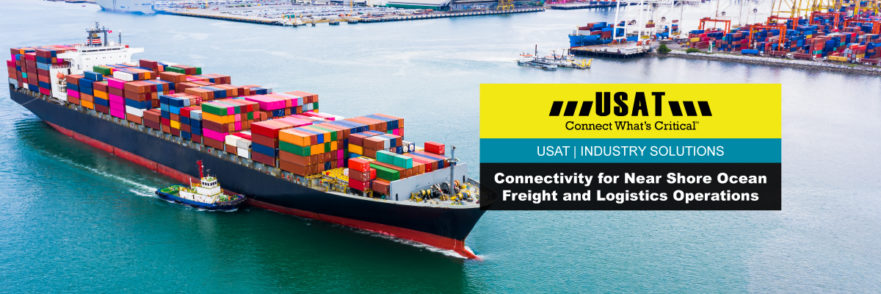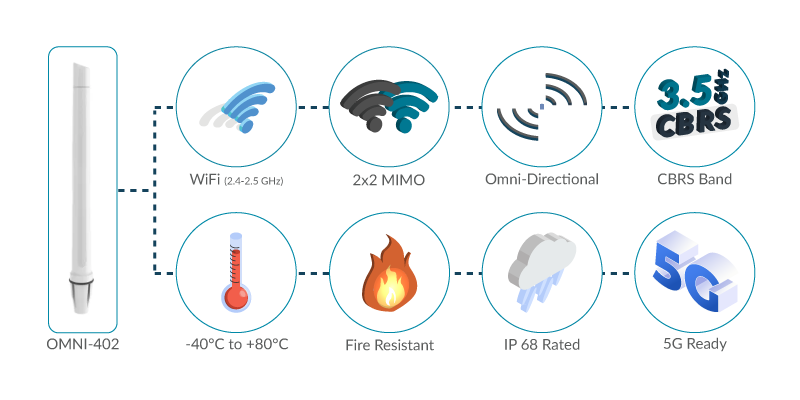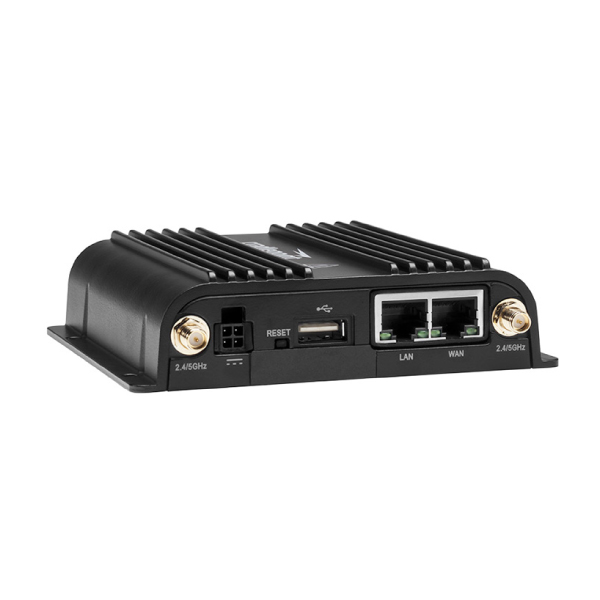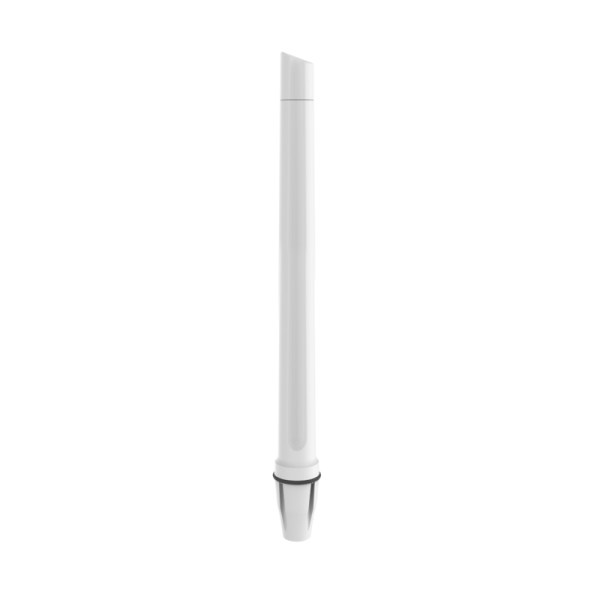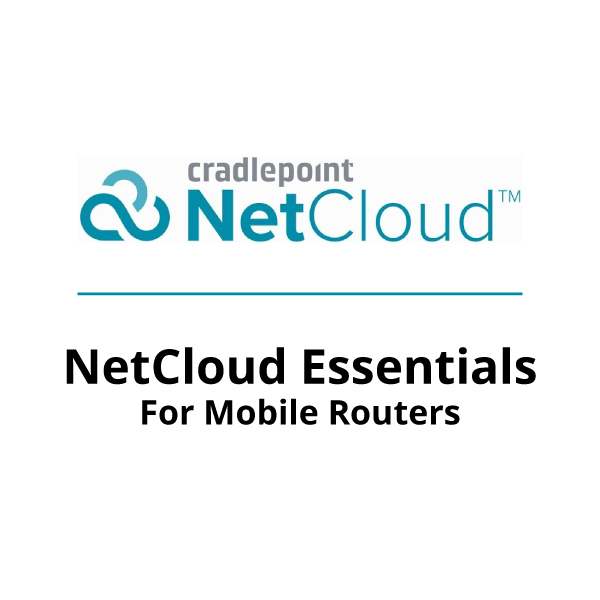Near Shore Communications Solutions
USAT Case Study | Maritime Logistics Connectivity
Within the maritime industry, teams of IT professionals monitor, manage, and track assets deployed across ocean freighters, container ships, tugboats, and other sea-bound vessels sailing the worlds vast oceans. Common and costly connectivity options like satellite are failing to keep up with the newest logistics strategies, IoT technologies, and cloud service offerings. Logistics companies are constantly looking for technologies capable of providing secure, flexible and scalable network solutions for their mobile enterprises.
Case Overview
IMPROVING NEAR SHORE CONNECTIVITY
An ocean logistics company reached out to USAT to help address a number of challenges their organization was facing.
They operate their own fleet of near shore and ocean bound crafts and assets, comprised of container feeders, multipurpose and offshore service vessels, and provide complete ocean freight services to third party organizations.
They house a team of highly productive on-shore administrators working to utilize technology and quality systems to improve the efficiency their operations.

Challenges Faced
Satellite Costs
The first thing to address was the high cost of satellite communications. While at one time satellite was the only option available to their team, advances in wireless technologies make it possible for their maritime organization to leverage 4G/LTE. With cellular networks they gain access to higher bandwidths at lower costs.
Crew Data Usage
Their next concern was the data usage of the vessels and accompanying crews. With international roaming fees coming to an end, they were trying to work out the best way to give their teams access to recreational WiFi (with reasonable data caps), while ensuring that their business-critical assets were given data priority over non-essential functions.
Remote Management
A third challenge was their lack of IT staff on-board their vessels. It’s not cost effective to staff their boats with IT professionals. They needed a solution that would allow for device management and troubleshooting from their main offices.
Harsh Environment
Lastly, whatever solution was developed to solve their first three challenges would also need to be able to stand up to the elements. Ocean bound ships are constantly in motion and are subject to extreme fluctuations in humidity, temperature, and wind speed, as well as the occasional and often violent storm out at sea.
USAT can provide your maritime organization the end-to-end communications solutions it needs to support the success of your coastal and marine operations.
Solution Delivered
When engineering solutions for the open ocean and coastal operations, it's important to select only the most durable devices possible. With wind, sun, waves, storms, and more, its critical that the endpoints and antennas selected for these projects can withstand the elements, and everything that comes along with them.
For that reason, the solution we developed utilized ruggedized routers and antennas purpose-built to operate under the harshest conditions and in the toughest environments.
Cradlepoint IBR900 Ruggedized Routers
We helped our client deploy ruggedized Cradlepoint IBR900 routers for use in their tugboats, barges, and ocean freighters across the Eastern Seaboard and North Atlantic - enabling cost efficient near shore connectivity.
Automatic routing enables 4G/LTE as their primary connectivity whenever in range. That way, costly satellite data can be used only as a backup for business-critical maritime applications.
Combined with satellite back-up, they have achieved near 100% percent network availability and uptime. And with the NetCloud Service, bundled with their IBR900 router, they can locate and remotely manage endpoints from a single on-shore location.
Poynting OMNI-402 Marine Antennas
To enhance the connectivity range of each router, and make use of their WiFi capabilities where necessary, we provided them with high-performance wide-band OMNI-402 marine antennas capable of 2x2 MIMO operation.
These antennas are built to MIL-STD-810F standards and are IP68 rated; protecting them from dust, UV rays, and salt water sprays and allowing smooth operation between -40° to -176°F.
Their vessels could now more easily access connectivity via near shore mobile networks up to 50 nautical miles away. And with two antennas per router, they configured the other to deliver on-board WiFi for crew use.
Case Study Download
If you'd like to reflect back on this solution or share it with colleagues, we've included a simple download of this article in a PDF format. Just click below to view it as a PDF and then click save.
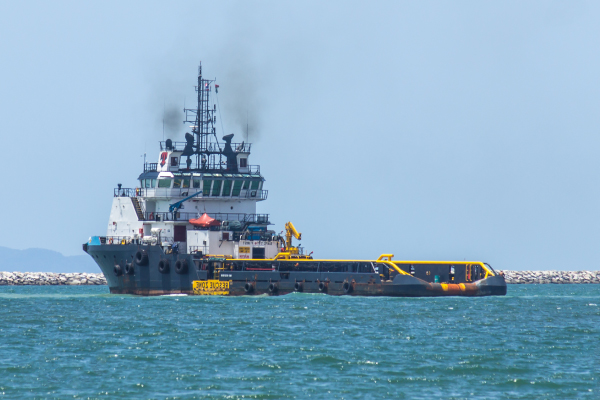
Why Choose USAT?
For the last 25 years USAT has provided expert IoT connectivity solutions to maritime organizations. Our team supports each and every aspect of your mission-critical connectivity projects. We engineer and provide solutions utilizing only top-tier cellular equipment from the most trusted manufacturers worldwide.
Our DevProv+ services team configures, provisions, kits and ships your devices hot and ready for immediate use. And our installation teams ensure your devices are functioning securely, reliably, and at peak performance.
Reach out to USAT today to rapidly deploy cellular solutions that meet your companies exacting vessel management needs:
- Give Us a Call: (919) 942-4214
- Send Us an Email: info@usatcorp.com
- Request a Consultant: Click Here

Recommended Equipment for Maritime Logistics Applications
Similar Articles and Case Studies
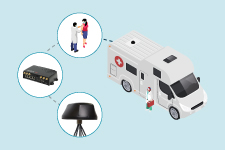
Vaccination Sites
Medical centers are reaching out to USAT for help setting up network communications for new COVID-19 testing and vaccination facilities.
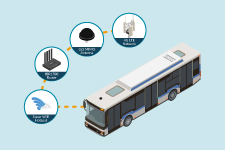
Public Transit WiFi
USAT is working with Regional Transit Authorities to equip their buses and transport vehicles with edge routers to broadcast community WiFi.
Share this Post

